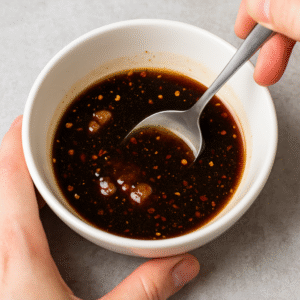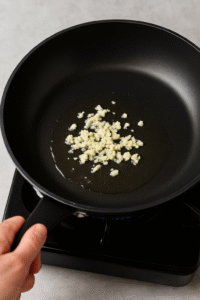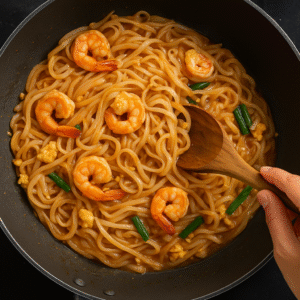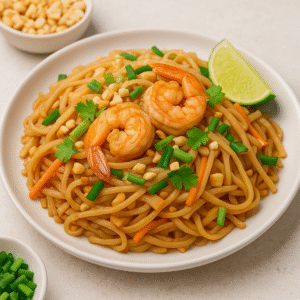Introduction
Pad Thai is one of the most famous Thai dishes in the world. It’s a flavorful stir-fried rice noodle dish that combines a balance of sweet, sour, salty, and savory flavors. With chewy rice noodles, tender chicken or shrimp, crunchy peanuts, bean sprouts, and fresh lime, Pad Thai offers the perfect mix of textures and tastes.
Unlike heavier pasta dishes like Lasagna or Spaghetti Carbonara, this Thai noodle stir-fry is light, fresh, and ready in just 30 minutes. That makes it an excellent choice for busy weeknights when you want something quick yet full of authentic flavor.
Table of Contents
The Secret of Pad Thai Sauce
The heart of any Pad Thai is the sauce. A traditional version blends tamarind paste, fish sauce, soy sauce, sugar, and chili. Tamarind gives the dish its signature tangy kick, while fish sauce provides umami depth. If tamarind paste isn’t available, lime juice can be used, but the flavor will not be the same.
The sauce should taste slightly stronger on its own, because once it coats the noodles and other ingredients, the flavors mellow and balance.
Tips & Tricks for Perfect Pad Thai
- Soak, don’t boil the noodles: Rice noodles should be soaked in warm water until pliable, not boiled, to avoid mushy texture.
- Use tamarind paste: It’s the authentic way to achieve the tangy-sour balance.
- Cook over high heat: A wok or large frying pan is essential for that quick stir-fry flavor.
- Don’t overcook the eggs: Lightly scramble them so they stay fluffy and mix well with noodles.
- Balance the flavors: Taste the sauce before adding it to the noodles – it should be sweet, sour, salty, and a little spicy.
- Add crunch at the end: Peanuts and bean sprouts should go in last to keep their texture.
- Serve with lime: A squeeze of fresh lime before eating brightens all the flavors.
👉 Love Asian food? You should also check out our Chicken Teriyaki, another quick and flavorful recipe.
Variations You Can Try
- Vegetarian Thai stir-fry: Replace chicken or shrimp with tofu and add extra vegetables like broccoli or bell peppers.
- Seafood Thai stir-fry: Use shrimp, squid, or even a mix of seafood for a restaurant-style version.
- Spicy Thai stir-fry: Add extra chili flakes or Thai bird’s eye chilies if you enjoy heat.
- Healthy twist: Use brown rice noodles and reduce sugar for a lighter dish.
Why You’ll Love Pad Thai
Another reason why This Thai noodle stir-fry is such a beloved recipe worldwide is its versatility. It can be easily adapted for different diets, whether you prefer chicken, shrimp, tofu, or a fully vegetarian version. The dish is also budget-friendly and quick to prepare, making it ideal for students, busy professionals, or families. Its balance of protein, vegetables, and carbohydrates turns it into a wholesome, complete meal that feels comforting yet light.
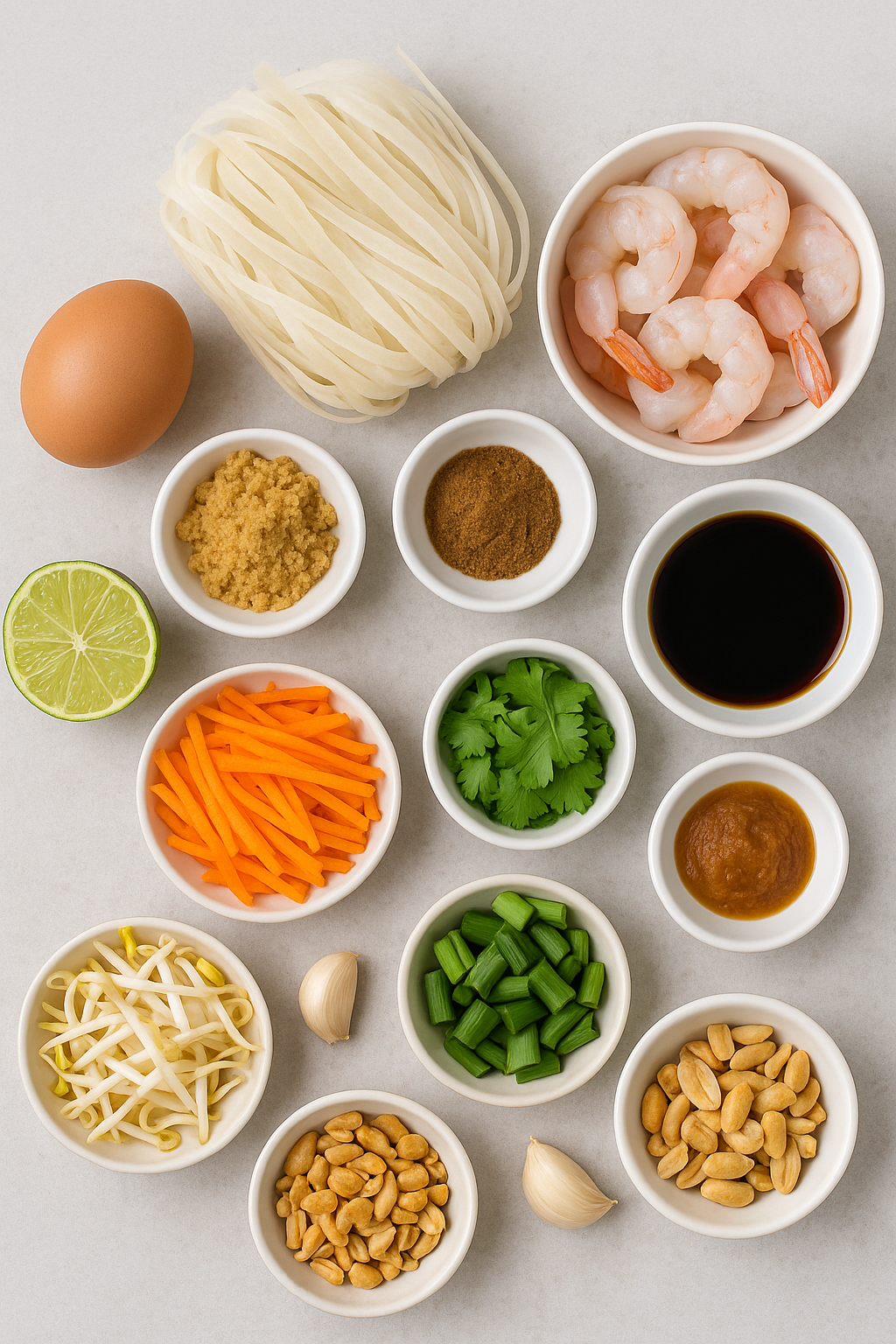
Pad Thai
Ingredients
Equipment
Method
- Soak the rice noodles in warm water for 20–25 minutes until pliable. Drain well.
- In a bowl, whisk together fish sauce, soy sauce, tamarind paste, brown sugar, and chili.

- Heat oil in a large wok over medium-high. Add garlic; stir 30 seconds until fragrant.

- Add chicken or shrimp; stir-fry 4–5 minutes until cooked through.
- Push to one side; pour in eggs and gently scramble.
- Add drained noodles; pour the sauce over. Toss 1–2 minutes until evenly coated.

- Add bean sprouts, carrot, and half the spring onions; cook 1 minute.
- Off heat. Top with peanuts, remaining spring onions, coriander, and serve with lime.

Notes
- Tamarind paste is key for authentic tang; lime juice is a last-resort substitute.
- Make it vegetarian: replace meat with 200 g firm tofu, cubed and pan-seared.
- Adjust sweetness/saltiness with sugar/fish sauce to taste before serving.
Storage and Reheating
Pad Thai is best enjoyed fresh, but you can store leftovers for later:
- Refrigeration: Place in an airtight container and refrigerate up to 2 days.
- Reheating: Reheat in a wok or frying pan with a splash of water or oil to loosen noodles. Avoid microwaving for too long, as noodles may dry out.
- Freezing: Not recommended. Rice noodles lose their texture when thawed.
Conclusion
Pad Thai is more than just a quick stir-fry – it’s a dish that represents the heart of Thai street food. With chewy noodles, a tangy tamarind-based sauce, and the perfect combination of fresh toppings, it delivers bold flavors in every bite.
Whether you prepare it with chicken, shrimp, or tofu, Pad Thai is versatile and guaranteed to please. Follow the simple tips above to recreate authentic flavors right in your own kitchen.
If you’re curious about its history, you can read more on Pad Thai – Wikipedia.
Just like our Greek Salad or Margherita Pizza, this recipe proves that sometimes the simplest dishes can also be the most delicious.
- 🍳 Carbon Steel Wok – 12–14″
- 🍴 Stainless-Steel Wok Spatula/Turner
- 🍜 Pad Thai Rice Noodles (5 mm)
- 🫙 Tamarind Paste (Concentrate)
- 🐟 Premium Fish Sauce
